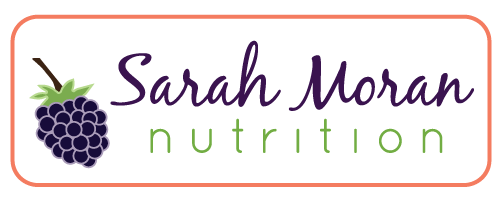 You all know I'm a big believer in the dangers of toxins in our environment. From the pesticides sprayed on our crops and chemicals in our food supply to the ingredients in our beauty products, we are bombarded by toxins each and every day. However, the often popular detox diets are not the answer. Even the most health-savvy individuals can be seduced by a too-good-to-be-true detox diet plan. With promises of fast weight loss, increased energy, improved mood, better sleep, clear skin, and more, it can be quite tempting. Why are these diets ineffective and even dangerous? For one, they are often centered around an overly restrictive, low-calorie, starvation-style eating pattern. This wrecks your hormones, bringing your metabolism to a screeching halt, and results in under-consumption of vitamins and minerals important for basic body processes and health. Plus, once the dieter returns to a normal eating pattern, the weight quickly comes back, along with a few extra pounds.
You all know I'm a big believer in the dangers of toxins in our environment. From the pesticides sprayed on our crops and chemicals in our food supply to the ingredients in our beauty products, we are bombarded by toxins each and every day. However, the often popular detox diets are not the answer. Even the most health-savvy individuals can be seduced by a too-good-to-be-true detox diet plan. With promises of fast weight loss, increased energy, improved mood, better sleep, clear skin, and more, it can be quite tempting. Why are these diets ineffective and even dangerous? For one, they are often centered around an overly restrictive, low-calorie, starvation-style eating pattern. This wrecks your hormones, bringing your metabolism to a screeching halt, and results in under-consumption of vitamins and minerals important for basic body processes and health. Plus, once the dieter returns to a normal eating pattern, the weight quickly comes back, along with a few extra pounds.
So how does one remove toxins from the body? First, it is important to understand that the body eliminates toxins naturally on its own. Organs such as the liver and kidneys work hard to clean things up and keep us healthy. With that in mind, the best way to detox is to live in a way that supports your body's natural processes. Follow these steps to transition to a lifestyle that continuously prevents the build up of toxins in your system.
1. Avoid Toxins When Possible
First, make it a little easier on your body by limiting your exposure. Buying organic, finding natural self-care products, never heating food in plastic, cooking and storing food in glass containers, and using natural household cleaners are all great strategies that can greatly reduce the amount of toxins you come in contact with.
2. Cut Out Processed Foods
Eating as close to nature as possible is going to cut out lots of weird additives and ingredients that simply aren't good for us. Our bodies weren't built to understand Cheez Puffs and Twinkies. Plus, most of these foods contain corn or soy (most likely GMO), which results in a diet that lacks diversity and, therefore, nutrition.
3. EAT Whole Foods
No starvation or liquid cleanses here. Focusing on vegetables, fruits, whole grains, and legumes will provide essential vitamins and minerals, along with antioxidants and other phytochemicals. Also, the fiber in these foods will keep things moving in your digestive tract, naturally cleaning you out.
4. Drink Water
Hydration is key. Not only will it help flush you out, but it will ensure that all of your systems are running smoothly. Use the urine test: If it looks like apple juice you need more water. A pale yellow to clear color means you're probably good to go.
5. Exercise
Working out increases circulation which ensures proper oxygenation and nutrition for your tissues. Also, it mobilizes fat stores which are a prime site for toxin accumulation. Ever see a sedentary, overweight person vomit after a tough work-out? Have you been that person? It's thought that the break down of fat during the workout also releases toxins that have built up in the fat tissue. This may play a role in the post-workout puke. Case and point: get your heart pumping!
If you follow these tips you'll be feeling better in no time!
Have you ever tried a detox diet?




 You all know I'm a big believer in the dangers of toxins in our environment. From the pesticides sprayed on our crops and chemicals in our food supply to the ingredients in our beauty products, we are bombarded by toxins each and every day. However, the often popular detox diets are not the answer. Even the most health-savvy individuals can be seduced by a too-good-to-be-true detox diet plan. With promises of fast weight loss, increased energy, improved mood, better sleep, clear skin, and more, it can be quite tempting. Why are these diets ineffective and even dangerous? For one, they are often centered around an overly restrictive, low-calorie, starvation-style eating pattern. This wrecks your hormones, bringing your metabolism to a screeching halt, and results in under-consumption of vitamins and minerals important for basic body processes and health. Plus, once the dieter returns to a normal eating pattern, the weight quickly comes back, along with a few extra pounds.
You all know I'm a big believer in the dangers of toxins in our environment. From the pesticides sprayed on our crops and chemicals in our food supply to the ingredients in our beauty products, we are bombarded by toxins each and every day. However, the often popular detox diets are not the answer. Even the most health-savvy individuals can be seduced by a too-good-to-be-true detox diet plan. With promises of fast weight loss, increased energy, improved mood, better sleep, clear skin, and more, it can be quite tempting. Why are these diets ineffective and even dangerous? For one, they are often centered around an overly restrictive, low-calorie, starvation-style eating pattern. This wrecks your hormones, bringing your metabolism to a screeching halt, and results in under-consumption of vitamins and minerals important for basic body processes and health. Plus, once the dieter returns to a normal eating pattern, the weight quickly comes back, along with a few extra pounds.